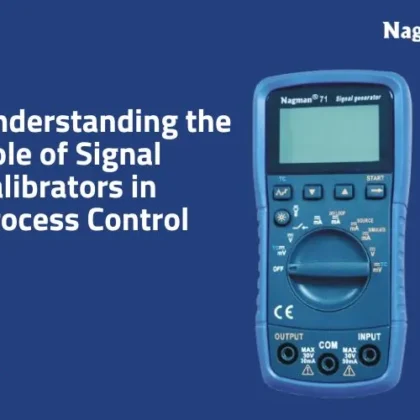Introduction to Digital Pressure Measurement Pressure measurement finds important applications in myriad industries. The technology is said to be everywhere, there to measure tire inflation, test gas,
No matter how high-quality the measurement equipment appears, it requires frequent calibration. Otherwise, there is a significant risk of inaccuracy, leading to costly blunders, missed deadlines, and additional costs. Pressure Gauge Calibration is crucial since the accuracy of pressure gauge readings is essential for numerous manufacturing operations. And Nagman is here to tell you all about pressure control solutions.
First Things First, What is Calibration?
Calibration is comparing the readings from measuring devices to recognised standards. When the recorded values are incorrect, the instrument has to be tuned. Pressure gauge calibration is often required yearly. Calibration and accuracy not only check the tool’s precision but also examine the traceability of the measurement. Following completion, the technician generates a report illustrating measurement errors before and after calibration. Calibration is done using specialised equipment, and techniques for pressure gauges necessitate high-quality calibrating equipment.
Why is Pressure Gauge Calibration so Important?
Pressure gauges are essential to various business operations, laboratories, and other commercial settings. They are among the most commonly used tools for pressure metrology. Many industries rely significantly on them. Because of the overwhelming quantity of pressure gauges and their seeming simplicity, adequate maintenance, including calibration, is often overlooked. Many businesses trust the accuracy of their metrology-oriented pressure gauges. Experts use gauge readings to identify prospective or current issues. The safety of individuals and industrial processes may be jeopardised if the gauges are inaccurate.
Forgetting to calibrate pressure gauges can result in production downtime, damaged goods, process quality issues, and other issues. Calibration must be performed with approved equipment. Ideally, a skilled professional should conduct the gauge calibration. Calibration findings should be recorded to better understand the instrument’s condition and comparability. The cost of routine calibration is minimal compared to the costs incurred by a business if the equipment fails to perform properly. In the best-case scenario, your production deadline will be pushed out. In the worst-case scenario, inaccurate pressure gauge readings might result in damage.
Types of Calibrators Used in Pressure Gauge Calibration
Pressure calibrators can be configured in various ways to meet individual needs. Hand-held multi-function calibrators are the tool of choice for on-site pressure calibration, which demands mobility and functionalities such as voltage, current, or digital signal monitoring/recording from the instrument being calibrated. A pressure calibrator is preferable when higher precision and precise pressure control are required in a laboratory environment.
How Often Should You Calibrate?
Pressure gauge manufacturers often mention the time between calibrations. These intervals should be followed until the history of previously recorded calibration findings tells us differently. New pressure gauges must be calibrated regularly to achieve meteorological stability. Many of the latest pressure gauges require prerequisite calibration when incorporated for the first time. Unexpected operating conditions are another cause for an impromptu calibration.
For example, when the pressure gauge is subjected to extreme vibration or stress. Then there are dead-weight testers- available in various accuracies and pressure ranges. High-end dead-weight testers are still regarded as the gold standard for pressure calibration at the highest level in laboratories worldwide. However, hand-helds and pressure controllers increasingly replace dead-weight testers in the field and process applications.
Leave your Pressure Calibration to the experts!
The presence of a pressure calibration stand is essential to guarantee the safety and quality of workers in proximity to the pressure gauge. This is the primary factor that differentiates quality products from rejections in industrial applications. And note that the calibration of pressure instruments is crucial to ensuring that measuring equipment complies with national standards. Nagman offers a wide range of high-quality calibrators for your pressure calibration needs, whether process calibrators or pressure calibrators.
We ensure that each machine and instrument meets industry standards to provide reliable findings for your lab. Need to check pressure controller performance? Check us out. Ensure the highest quality pressure controller selection for better accuracy with Nagman!












